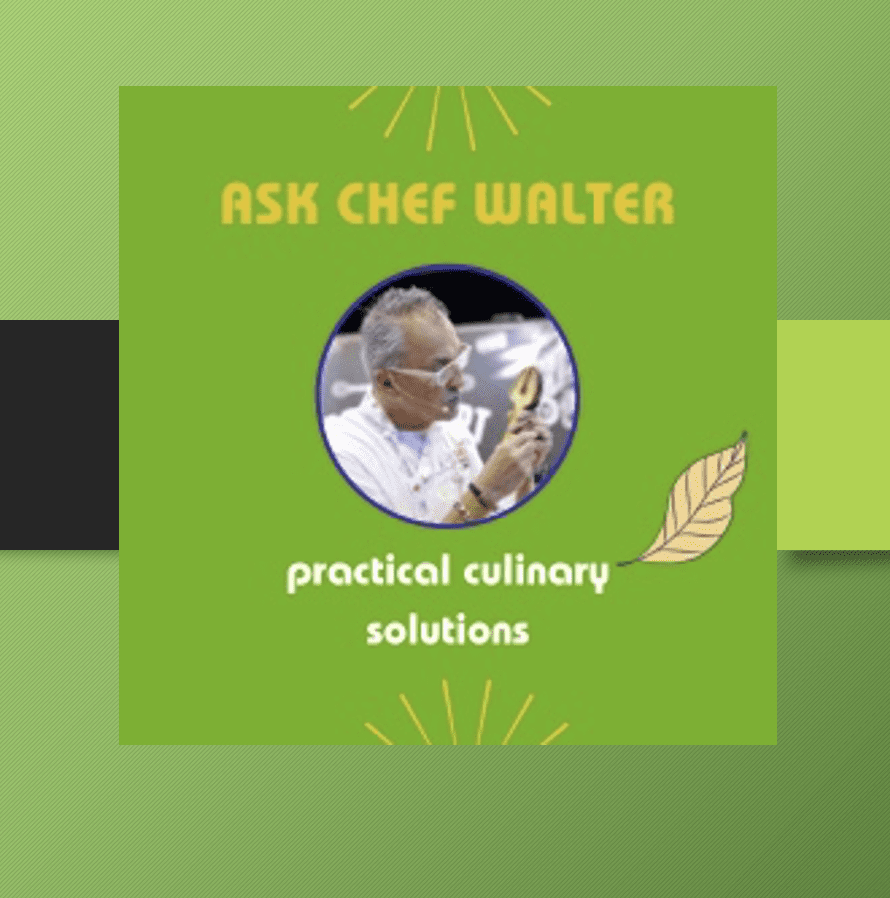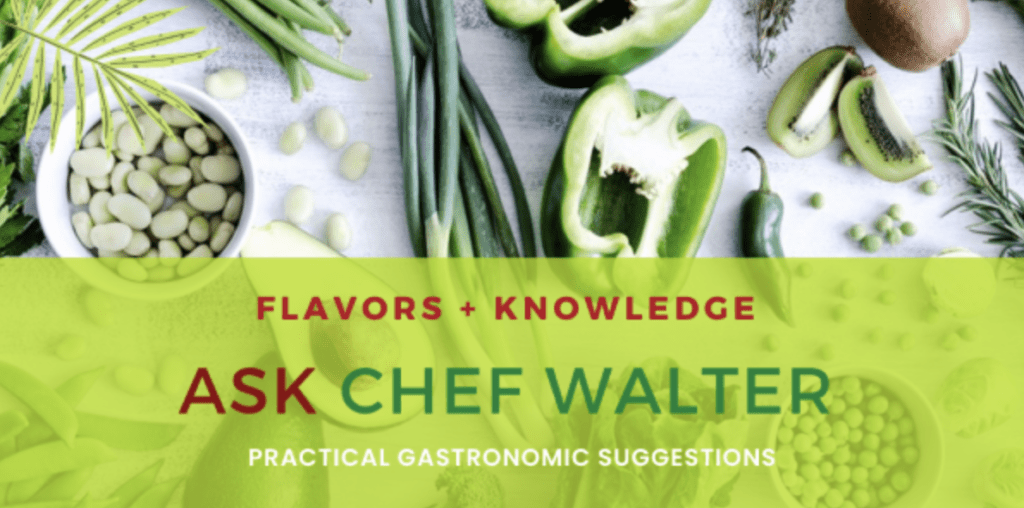Search Posts
Recent Posts
- To Do in RI: 2-day Newport Flower Show – Authors on floral design to speak June 21, 2025
- In the News… quick recap of the week’s news 6.21.25 June 21, 2025
- Providence Art Club Prestigious National Open Juried Exhibition Begins June 21, 2025
- Burn with Kearns: “30-day Shreds” Fail the 50+ Market. What To Do. – Kevin Kearns June 21, 2025
- Rhode Island Weekend Weather for June 21/22, 2025 – Jack Donnelly June 21, 2025
Categories
Subscribe!
Thanks for subscribing! Please check your email for further instructions.

Ask Chef Walter – Walter Potenza
by Master Chef Walter Potenza
Each week Chef Walter will take your questions and provide his answers. Think about all that holiday cooking coming up – what would you like to ask?
Here are three questions that came in this week to Chef Walter, and his responses:
Question 1:
Does carryover cooking occur with baked goods as it does with meats? Thank you in advance!
Pat Yanikoski, Stoughton, MA (originally from Cranston)
Answer 1:
Carryover cooking primarily occurs with meats and is less of a concern with baked goods. Carryover cooking, also known as residual heat cooking, happens when the internal temperature of a food item continues to rise even after it has been removed from a heat source. This is because the outer layers of the food are hotter than the inner layers, and heat continues to transfer from the hotter exterior to the cooler interior.
In meats, carryover cooking can be significant, especially with larger cuts like roasts and steaks. The internal temperature of the meat can continue to increase by several degrees after it’s been removed from the oven or grill. This is why it’s recommended to let meat rest for a few minutes after cooking to allow the temperature to even out and for the juices to redistribute, resulting in a juicier, more evenly cooked piece of meat.
In baked goods, carryover cooking is generally not a major concern because baked goods, like cakes, cookies, and bread, do not have the same temperature differentials between their inner and outer layers as meats do. However, there can still be a minimal amount of carryover cooking with baked goods, particularly with dense items like bread. It’s usually not enough to significantly impact the final product, and baked goods are more commonly affected by over-baking during their initial time in the oven.
To ensure that baked goods are not overcooked, it’s essential to monitor them closely and follow the recommended baking times and temperatures provided in the recipe.
Question 2:
Living in rural Cape Breton Island, Nova Scotia, my daughter and her husband opened a breakfast/lunch cafe. They serve coffee, sandwiches, soup, salad and dessert. What is the most important way to lure people in?
Answer 2:
To attract customers to their breakfast/lunch cafe in rural Cape Breton Island, Nova Scotia, your daughter and her husband should focus on the following:
Local Marketing: Emphasize their connection to the local community. Use local ingredients, feature local artists, or host events that bring neighbors together.
Unique Menu: Offer distinctive and locally-inspired menu items that stand out from the competition.
Online Presence: Maintain an active online presence through a website and social media. Share mouthwatering food photos, menu updates, and customer reviews.
Customer Engagement: Encourage customer reviews and feedback, and respond to them promptly. Engage with the local community through social media and local events.
Exceptional Service: Provide top-notch customer service to ensure a positive dining experience, encouraging repeat business and word-of-mouth recommendations.
Specials and Promotions: Offer daily or weekly specials, loyalty programs, or promotions to entice customers to return.
Collaborations: Partner with local businesses, such as nearby B&Bs or tourist attractions, to cross-promote each other.
Outdoor Seating: If possible, create an inviting outdoor seating area that takes advantage of the scenic surroundings.
Clean and Cozy Ambiance: Ensure the café is clean, well-lit, and has a warm, welcoming atmosphere.
Local Events: Participate in or host local events, like farmers’ markets or cultural festivals, to increase visibility.
Catering and Takeout: Offer catering services and takeout options to reach a broader customer base.
Remember that in a rural area like Cape Breton Island, building a strong sense of community and offering something unique can be key to drawing in customers.
I hope it helps: Chef Walter
___
Question 3:
Laura K, from Franklin, Virginia, asked about the mistakes to avoid when baking fresh tarts.
Answer 3:
Here are five mistakes that you don’t want to make when baking a fresh tart:
- Overworking the dough:One of the most common mistakes in baking a tart is overworking the dough because it may turn tough and chewy. To avoid this, handle the dough as little as possible and avoid kneading it excessively.
- Not pre-baking the crust:Another mistake is not pre-baking the crust. Pre-baking the crust helps to prevent it from becoming soggy and ensures that it stays crispy. To pre-bake the crust, prick it with a fork, line it with parchment paper, fill it with a mixture of dried beans, chickpeas, or pie weights, then bake it until it’s lightly golden brown.
- Using the wrong type of flour:The type of flour you use can significantly affect the texture of your tart. Using the wrong type of flour can result in a rigid or crumbly crust. For a tender and flaky crust, use all-purpose flour.
- Overfilling the tart:Filling it with the right amount is essential, as this can cause it to spill over during baking. To avoid this, fill the tart with the filling only up to about three-quarters of the way up the crust.
- Not chilling the dough:It is essential to help the crust hold its shape and prevent it from shrinking during baking. After you’ve rolled out the dough and placed it in the tart pan, chill it in the refrigerator at 40 F for at least 30 minutes before baking.
___
Ask Chef Walter! Send your Questions this week to:
walterpotenza@substack.com and news@rinewstoday.com!
And look for Chef’s response next week in the Sunday column, “Ask Chef Walter…”
___
Follow Chef Walter’s newsletter – FLAVORS + KNOWLEDGE – to read other articles and features. https://walterpotenza.substack.com/
___

Meet Chef Walter!
There is a constant, recognizable thread in the career of Walter Potenza to elevate the level of Italian culinary culture in the United States. Besides his unquestionable culinary talent and winning business perspective, Chef Walter has been a relentless educator with passion and knowledge who defeats stereotypes. His life, career, and values are a model, an example to follow by any chef of Italian gastronomy working outside Italy.
Chef Walter appears regularly on National and International Networks such as Food Network, ABC, CBS, NBC, RAI, FOX, and Publications such as NY. Times, Washington Post, Wall Street Journal, Food & Wine, Saveur, Gourmet, and several Italian media outlets. And now – RINewsToday!
Travel with Chef Walter!
Last week’s article, and more about Chef Walter Potenza:



